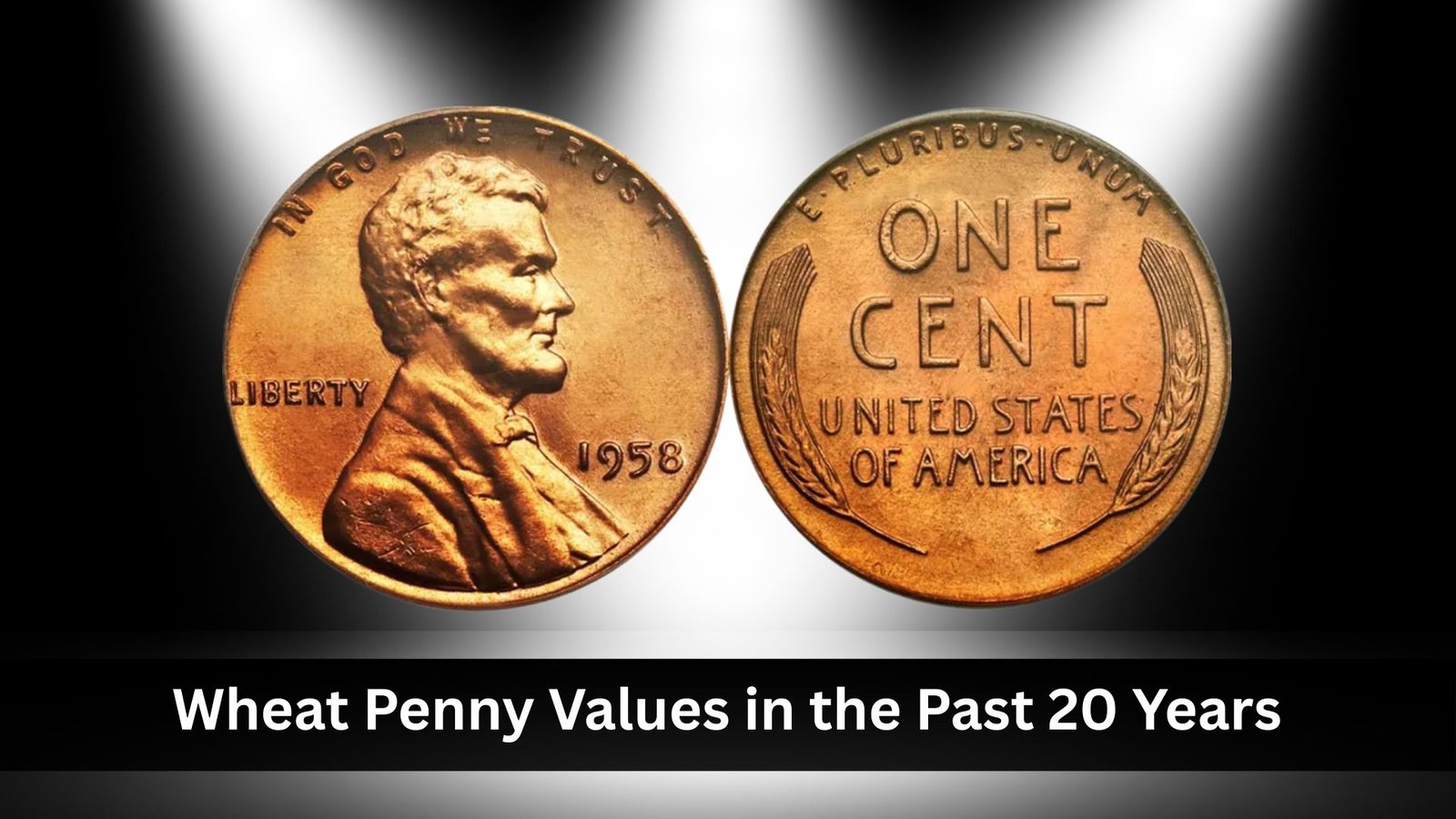Imagine digging through your grandma’s old cookie jar and pulling out a shiny 1943 penny that could be worth a fortune. That’s the magic of wheat pennies—those humble copper coins hiding epic stories and skyrocketing values. Over the last 15 years, from 2010 to 2025, wheat penny values have surged thanks to collector frenzy and rare finds.
In this guide, we’ll uncover the trends, spot the gems, and help you turn pocket change into a numismatics treasure. Stick around to learn how your stash might be worth more than you think!
What Are Wheat Pennies?
A Quick Intro to These Rare Coin Icons
Wheat pennies, or Lincoln wheat cents, are those iconic one-cent pieces with Abraham Lincoln on the front and twin wheat stalks on the back. Minted from 1909 to 1958, they’re a staple in the world of rare coins and numismatics. What makes them special? Beyond their vintage charm, certain dates and errors turn everyday finds into high-value wheat penny treasures.
The Fascinating History of Wheat Pennies
Born in 1909 to honor Lincoln’s centennial, these coins were designed by Victor David Brenner. The wheat reverse symbolized America’s agricultural roots. By the 1950s, rising copper costs led to their retirement in 1958. Fast-forward to the 2010s: online auctions and social media revived interest, boosting wheat penny values as hobbyists rediscovered these numismatics gems.
Why Wheat Penny Values Matter Today
In uncertain times, wheat pennies offer stability as tangible investments. From 2010 to 2025, values climbed due to millennial collectors, TikTok hunts, and precious metal hype. Rare coins like the 1909-S VDB jumped from under $1,000 to over $2,500. Even common ones hold steady, making them accessible entry points into rare coin collecting. Today, they’re not just coins—they’re pieces of history with real financial upside.
How to Hunt and Value Your Wheat Pennies
Start simple: Check your change or family heirlooms for pre-1959 dates. Look for mint marks (S for San Francisco, D for Denver) under the date. For accurate wheat penny values, grade condition—worn coins fetch cents, while mint-state beauties soar. Apps like PCGS CoinFacts or local dealers can appraise. Selling? Hit eBay for quick flips or auctions for max profit. It’s an easy way to dip into numismatics and maybe fund your next hobby.
Top Wheat Penny Records and Stats
Wheat pennies boast jaw-dropping sales. Here’s a snapshot of value trends for key dates over the past 15 years:
| Wheat Penny Type | 2010 Avg. Value | 2015 Avg. Value | 2020 Avg. Value | 2025 Avg. Value |
|---|---|---|---|---|
| 1909-S VDB | $900 | $1,400 | $1,950 | $2,500+ |
| 1914-D | $1,200 | $2,100 | $3,000 | $3,600+ |
| 1922 No D | $750 | $1,100 | $1,900 | $2,800+ |
| 1943 Copper Error | $250,000 | $400,000 | $700,000 | $1,000,000+ |
| 1955 Double Die | $1,000 | $1,500 | $2,200 | $2,800+ |
And the record-breakers? Check these top sales:
| Rank | Coin | Record Sale Price | Year Sold |
|---|---|---|---|
| 1 | 1943-D Bronze | $840,000 | 2021 |
| 2 | 1943-S Bronze | $504,000 | 2020 |
| 3 | 1944-S Steel | $408,000 | 2021 |
| 4 | 1943 Bronze | $372,000 | 2021 |
| 5 | 1958 DDO | $336,000 | 2018 |
These stats show why wheat cent values keep collectors hooked.
Pro Tips from Numismatics Pros
Don’t clean your coins—it kills value! Store in albums away from air. Hunt estate sales for deals. Certify high-graders with PCGS or NGC for 10x boosts. Join forums like CoinTalk to swap stories. Remember, the fun’s in the chase—start small and watch your collection grow.
Frequently Asked Questions
What’s the Rarest Wheat Penny?
The 1943 Copper Penny tops the list, with sales over $1 million.
Are All Wheat Pennies Valuable?
Nope—most commons are worth pennies, but keys like 1914-D shine.
How Do I Sell My Wheat Penny?
Use Heritage Auctions or local shops for trusted sales.
Should I Grade My Coin?
Yes, for anything over $50—certification skyrockets wheat penny values.
Where to Find Wheat Pennies Today?
Bank rolls, flea markets, or online lots—happy hunting!
In wrapping up, wheat penny values over the past 15 years prove these tiny treasures pack big potential for numismatics fans. From humble starts to million-dollar errors, they’ve turned hobbies into windfalls. Dust off your jar, check those dates, and dive in—your next rare coin find awaits! Share your stories below or explore more on rare coins. What’s your favorite wheat penny tale?

